From the desk of an Indian architect, prompted by the Climate Change induced Pakistan floods.
A ‘climate carnage never seen’ was how UN Secretary-General Antonio Guterres described his recent visit to Pakistan- the developing country witnessing the worst floods the world has seen since 2017.

In the past fifty years, Climate Change coupled with extreme weather events has prompted a multifold increase in the number of disasters. According to the World Health Organisation, 80-90% of natural disasters in the last few years comprised floods, droughts, tropical cyclones, heat waves and severe storms.[1] The increasing intensity and frequency of floods are affecting developing nations the worst. In South Asia, one of the most flood-prone regions worldwide, over 4400 people have lost their lives in floods occurring since January 2022. Pakistan, the worst affected country, has lost 1400 citizens (at the time of writing this article) in catastrophic flooding due to heavy, constant rain since June 14[2]. Brought on by Climate-change-induced melting glaciers and abnormally heavy rainfall, one-third of the country is underwater[3] while 33 million people are displaced.
A flashing news headline mentioning the number of displaced and the death toll in Pakistan’s worst floods first made me gauge the intensity of the disaster. The second half of the headline mentioning Mohenjo-daro’s World Heritage Site status being at risk was inconspicuous put along with the loss of life.
In disaster recovery, everything comes second to life and its fundamental needs. I, for once, find it hard to consider damage which does not physically impact one’s daily life. The inundated roads, the ruined houses, the broken bridges, and the flooded medical centres are a bigger priority than heritage. How could a country, looking at $ Billions worth of damage and 12% of the population displaced, prioritise its heritage when a citizen of a different country was struggling with the idea itself?
But the mention of Mohenjo-daro, one of the most revered heritage sites in the Indian Subcontinent, increased the gravity of the impact of Disaster and Climate Change for me; disasters have wiped out regions along with the Tangible and Intangible Heritage of the place. Climate has contributed to the settling and abandonment of civilisations since the beginning of time; Climate Change and Disasters have forced communities to migrate. A 1960s theory proposed by hydrologist Robert L Raikes and archaeologist George F Dales refers to a natural disaster, in the form of a series of devastating floods, for leading to the destruction of the major urban centres in the Harappa Civilization, including one of its largest cities, Mohenjo-daro. Today, about 60 years since, record rain has led to massive destruction of the World Heritage Site.
Mohenjo-daro, once one of the best preserved World Heritage Sites in South Asia, is now on the brink of losing its status, 100 years since first discovered in 1922. The loss of the Heritage Status would stop the site from receiving protection, funding and preservation aid that a World Heritage Site tag could bring in, further leading to its degradation.
“The torrential rains that hot Pakistan faced at the beginning of the Monsoon season have had a devastating effect across the country. The Heritage fraternity has been especially concerned about the condition of heritage sites and the UNESCO World Heritage site of Mohenjo-daro.”
Afia Salam, a Journalist from Pakistan
As an Indian, Mohenjo-daro, translating into the ‘Mound of the Dead Men’ in Sindhi, is one of the most, if not the most, widely read about ancient cities in the entire subcontinent- a marvel of Architecture and urban planning. It is one of the earliest major cities and is considered the most advanced city of its time. Today, Mohenjo-daro is turning into the Mound of Dead Heritage. The 5000 years old site is facing damage caused by non-stop heavy rain. Ancient walls have collapsed, and so has the Stupa dome protection wall. Images of officials pumping water out of the heritage site have emerged. At the same time, locals from nearby villages have inserted pipes and diverted the flood waters from their villages to the Mohenjo-daro canal; unlike the World observing from the outside, the local communities are not in the position to choose between heritage and basic needs.
“In many efforts to preserve heritage sites, the community may feel that the heritage site is considered more important by the world than the impoverished communities surrounding the site”
Ayesha Shahid, an urban researcher from Pakistan

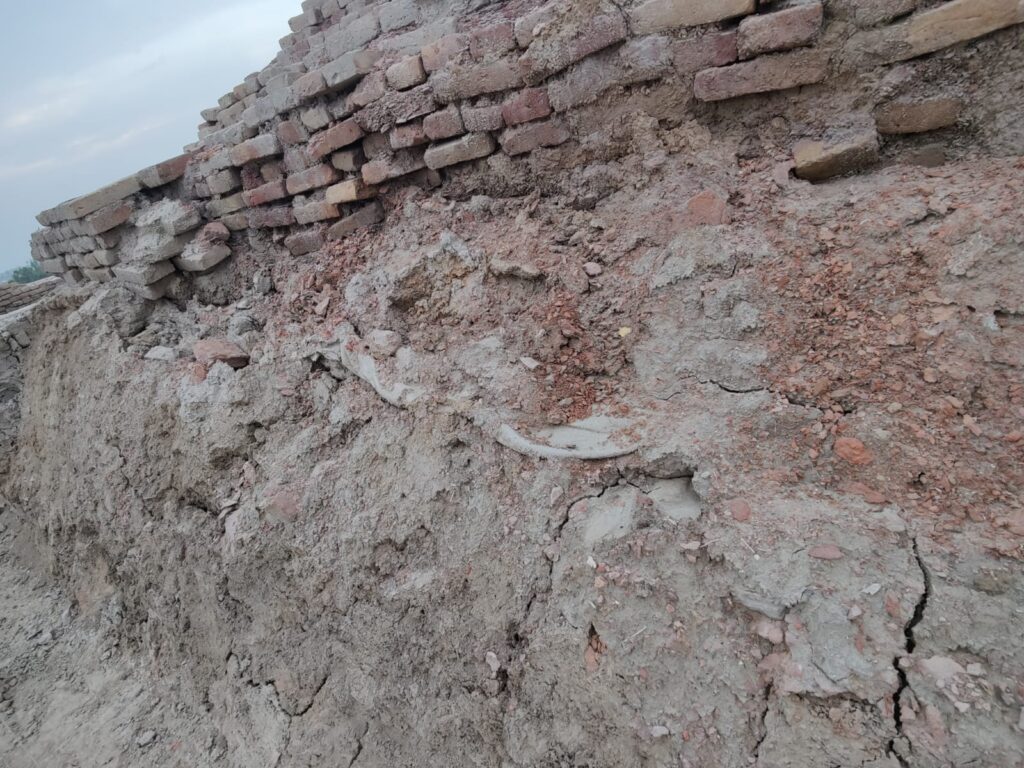
In the past, there have been several instances that could validate Ayesha’s statement. In 2001, while millions of Afghans were suffering from starvation, foreign aid to preserve ancient works was extended. The government, in response, destroyed two giant Buddha statues in rage.
For Pakistan, it is not just this one ‘well-known’ World Heritage Site facing the risk of irrevocable damage.
“Whatever we have restored has been damaged. There is not a single place left in Sindh where heritage remains intact; be it Kot Diji, Ranikot, Shahi Mahal, White Palace, Faiz Mahal, the historic imam bargahs, bungalows or public dispensaries”
Hamid Akhund, Secretary of the Endowment Fund Trust (EFT) for the Preservation of Heritage of Sindh, spoke of the massive scale damage in the Sindh region- one of the most affected regions, to Dawn.[4]

Mohenjo-daro is not the first Heritage Site at the risk of irrevocable damage nor the only in the ongoing floods. The site is not the first instance of Cultural Heritage being impacted by human actions either! But it is the first instance, at least in the region I represent, where a discourse involving Climate Change and heritage has gotten initiated at this level.
The site is one of the most well-known sites in the entire Subcontinent, and thereby damage to its ruins is receiving significant media attention. However, first-hand accounts from Pakistan suggest that the situation is probably worse in the news than it is on the ground.
“The people I have spoken to have said that the reports in media are making the damage appear worse than it is. However, it would be premature to make any definitive statement until the fact-finding team can finish its assessment, and they will surely share it publicly”
Afia Salam
While we await Mohenjo-daro’s official assessment, the floods, which affected nearly 1/3rd of the country, have heavily impacted the country’s heritage. The restoration of the lesser-known heritage sites would probably not receive as much attention from the concerned authorities and the public. Several graves and six tombs in the Mian Noor Mohammad Kalharo graveyard have vanished, while walls have caved in those that continue to stand. Kot Diji Fort, another structure belonging to the Indus Valley Civilisation, has faced heavy destruction. Inundated with water, the Fort has provided shelter to hundreds of displaced locals in Makeshift camps.
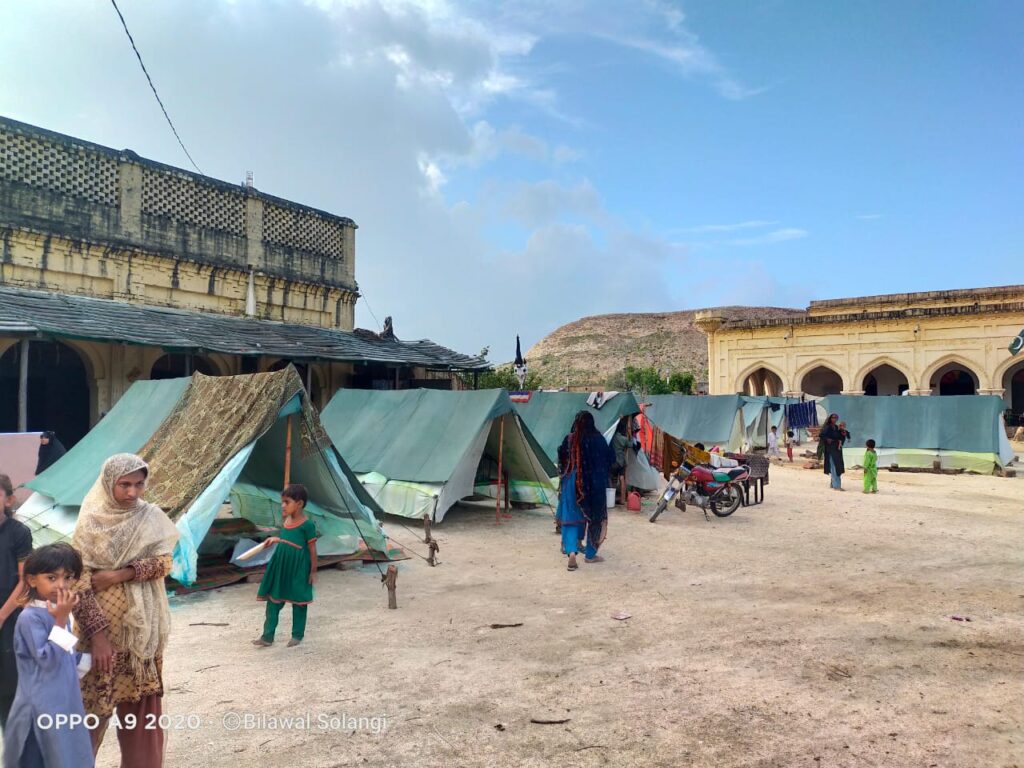
It is not just the ‘excavated or discovered’ heritage at risk.
Heritage sites yet to be discovered are also at risk of getting damaged or lost altogether- in Mohenjo-daro, rains have created furrows in the excavated areas, exposing the ones buried underneath.
So is Intangible Heritage. Disasters are causing displacement and resettlement of communities across the World. These families migrate with their traditions, landscapes, histories and culturally significant spaces left behind, often initiating the beginning of their Cultural end. Several indigenous languages have gone extinct due to migration- Kumaoni, my native language, falls under UNESCO’s vulnerable language category.
Ironically, calamities, that bring about destruction to heritage, could also help connect better with the past. They can encourage building resilience to climate change and could help understand past responses to changed climatic conditions. The local communities could adopt strategies that integrate natural science and cultural heritage. These could encourage adaptation and mitigation planners, leading us to a more sustainable future. In Assam, an Indian state with a landscape of flat floodplains, the inhabitants of the island Majuli deal with changing water levels by resorting to historical portable building techniques to mitigate flood impact.
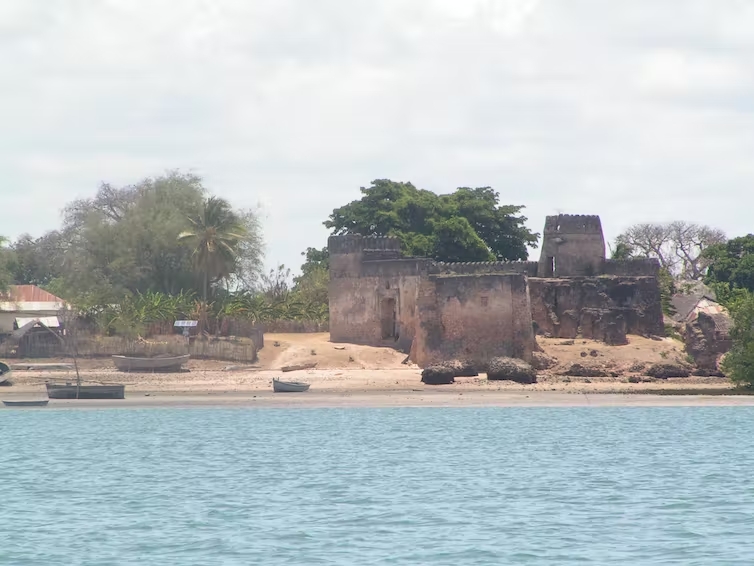

In another example, the flooded landscape of the Isle of Athelney and East Lyng in Somerset, England, gave an insight into why the inhabitants might have chosen the locations for their settlements. A dry land strip connects the two sites. The strip follows a medieval causeway, which today acts as flood defence.[5]

However, it would take a long time for the displaced locals of Pakistan to be in a position where they could consider the heritage that they might be losing and work towards preventing it.
“With devastating disasters like the present one, lives now become more important than relics of the past and community priorities may understandably shift. However, heritage is the link to its community’s past; a well-preserved heritage site will help the community take ownership of the heritage and the historical narratives as a part of their lives.”
Ayesha Shahid
Despite being an architect, before the news headline, the natural environment was my focus when discussing Climate Change; even sustainable building practices were to be adopted to ensure minimum environmental impact. As I read about the damage caused to Mohenjo-daro, I started wondering about Climate Change’s impact on Built habitats, especially Heritage sites. My research made me realise that this was not just an unexplored territory for me- investment in heritage remains absent in Climate Policies. Disasters not just impact the heritage fabric structurally but also have adverse social and cultural impacts- consequences are experienced by the intangible heritage and the local communities living around it.
“Disasters slow cultural development. Floods lead to loss of historical devastation and change the cultural landscape; along with this physical loss, there is a huge amount of intangible heritage distortion due to internal migration and disappearance.”
Marvi Mazhar, architect and researcher from Pakistan
History has proven that when the local communities shift, the heritage remains abandoned, in a state of neglect. The Kuldhara village in Jaisalmer, India, was abandoned by its inhabitants, possibly due to an earthquake, lack of water or, as the legend goes, a cruel minister. Irrespective of the reason, once a prosperous town, Kuldhara, today lies in a state of ruin.

For Pakistan and its heritage, several challenges lay ahead- the World can afford to look at the entire picture with heritage as a part of it. But this limelight restricts to well-known structures, however, the damage is not restricted to them.
“ From my practice and spatial thinking, we should think beyond the monumental, recognised heritage sites. We should also focus on small-scale devastations of old towns. Sukkur, Kotdigi, Khairpur and many such villages have incredible historical structures, monuments and sacred spaces, which got vulnerable to ongoing constant rains alongside urban-rural flash floods. These structures are made of historical material which needs a heritage care management plan. It is a yearlong effort of preparedness and thinking about how to work alongside the climate crisis- we now have to think beyond the disaster management plans- how to incorporate infrastructure which protects these vulnerable sites through constant monitoring and everyday protection infrastructure.”
Marvi Mazhar
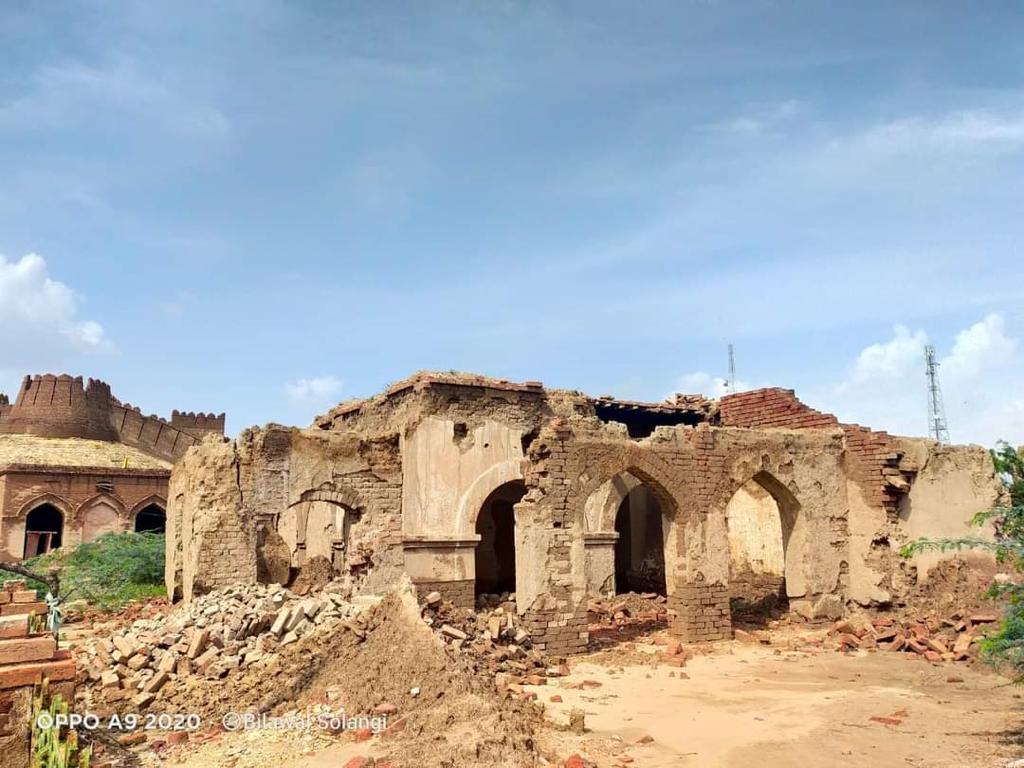

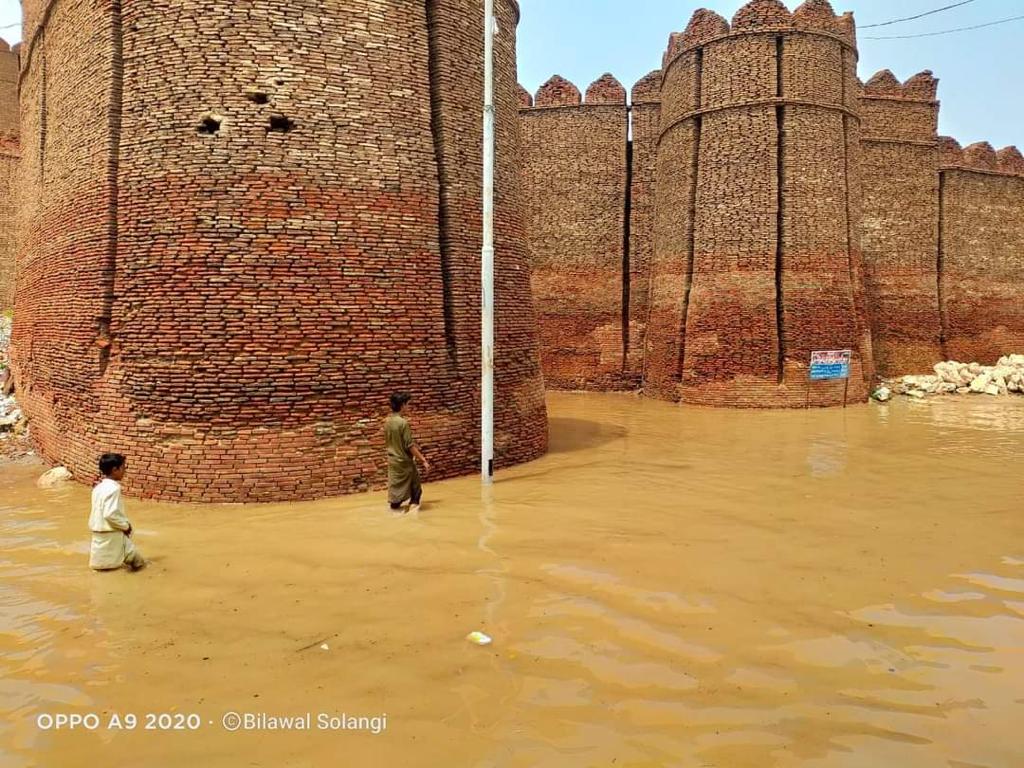
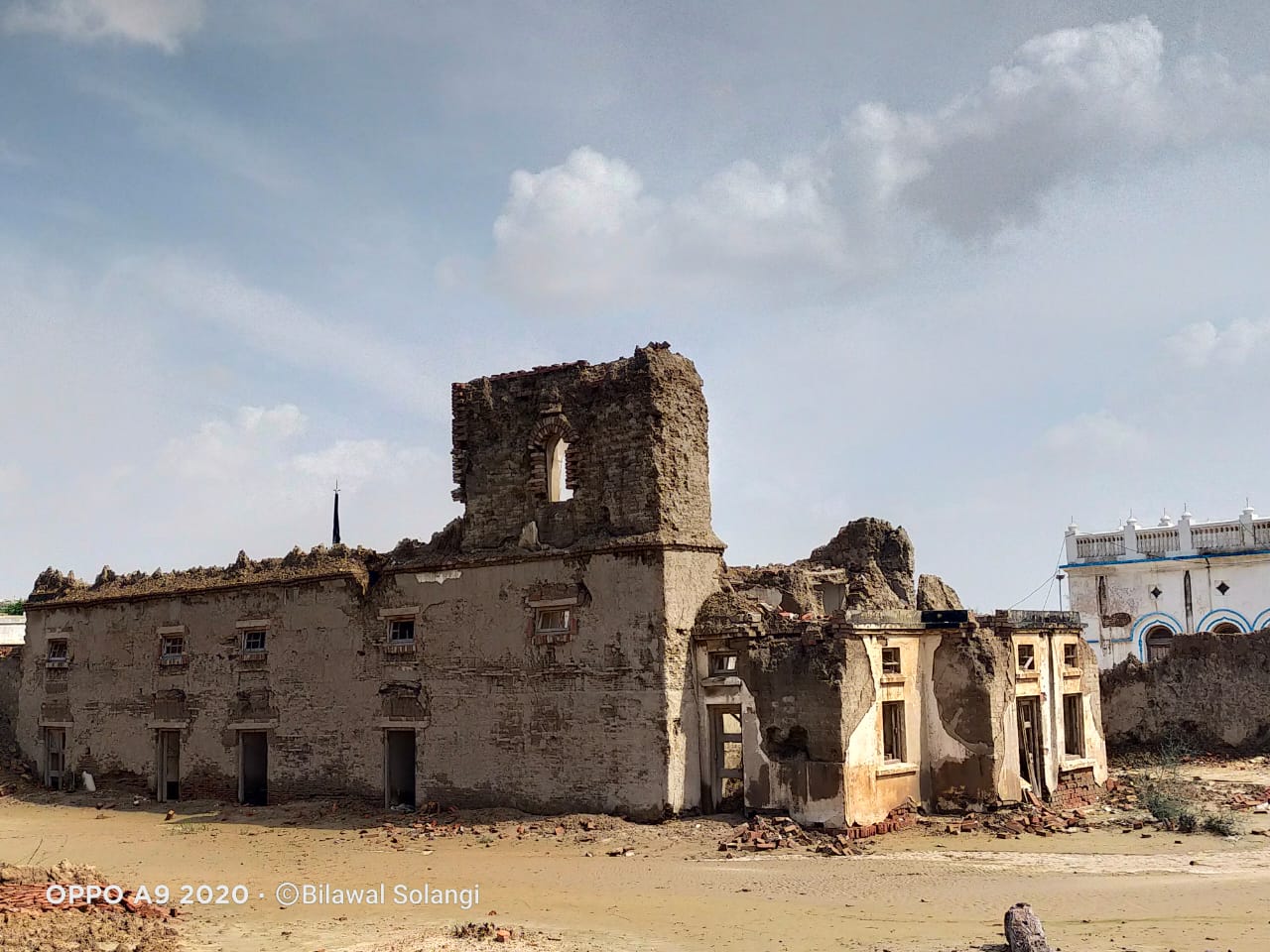
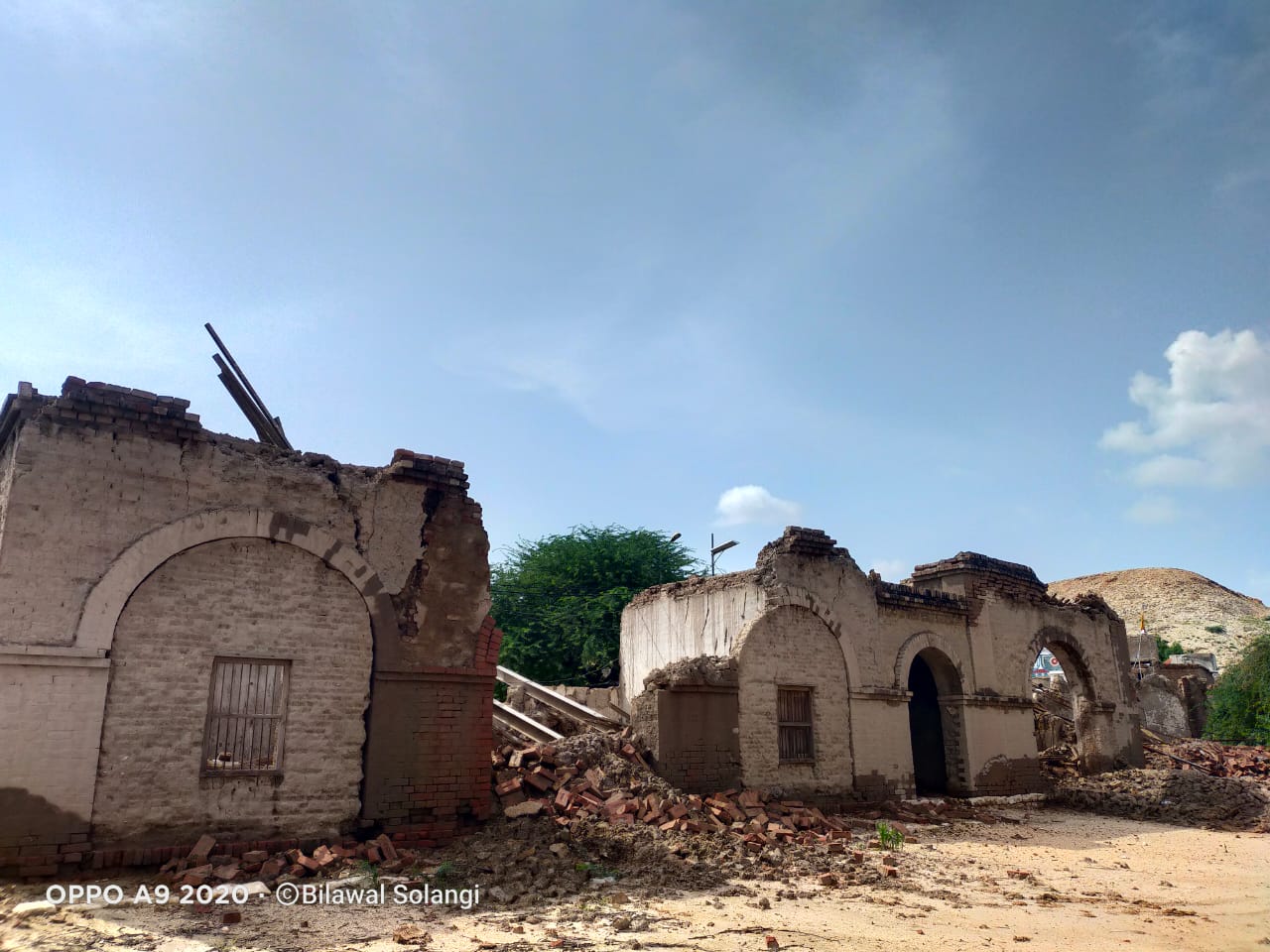
For the globe, the ongoing situation is a wake-up call! By 2100, the global sea level could rise by 1-4 feet.
While disasters immediately impact the fabric, Climate change does not need one to erode the remnants of the past. A litany of Climate Change-induced impacts contributes to the continuous damage to heritage sites. Precipitation levels are damaging the remains of the earthen architecture city Chan Chan. Change in soil’s moisture content post flooding leads to increased saline crystallisation on built surfaces leading to their decay, as observed in the buildings of the Historic Mosque City of Bagerhat in Bangladesh. Increased humidity could lead to ground subsidence, while pest migration could occur on organic building material.
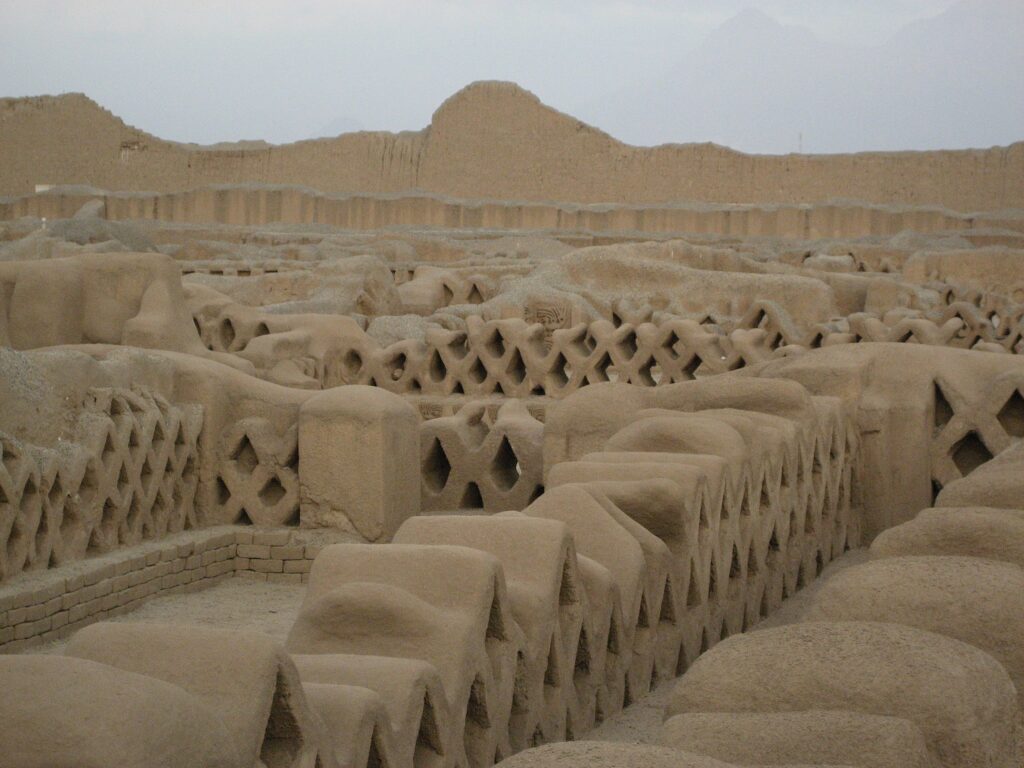
We have limited control over nature-induced impact, but there is a need for better documentation, increased awareness, continued preservation and education. When the communities migrate, physical space must be available to them to practice their traditions. In 2014, a global analysis by researchers at the University of Innsbruck and the Potsdam Institute for Climate Impact Research identified more than 130 Cultural World Heritage Sites at risk of Climate Change impact[6]– each site has shaped a community’s identity.
“Today, heritage sites are in decay because constant everyday care is not part of the holistic heritage management; it is heavily dependent on external funding or unchecked tourism development-based infrastructure. We now have to think more from the point of view of climate than economics.”
Marvi Mazhar
Driven by the potential loss of heritage of significant value, Pakistan’s situation is not the first time a drastic impact has prompted the need to preserve heritage- we have had discourses before.
Climate Change has led to unprecedented environmental changes, but natural environments have always been dynamic. These changes often induce or accelerate the process of losing Cultural Heritage- the core of any civilisation that gives us an identity and a sense of our roots. My research for this article made me realise that we may be aware of this gradual degradation, but we are not proactive in preventing it. I came across dozens of research papers by organisations, independent researchers and heritage committees on the impact of Climate Change on heritage. Yet, documented implementation of heritage conservation in response to Climate Change remained largely absent.
Climate Change is impacting Cultural Heritage. This impact may not be visually evident but is leading to Cultural Heritage degradation.
Worldwide, authorities have been set up at the International, National and local levels to cater to challenges Heritage faces- the focus broadly remains on Physical Heritage. For the continued preservation of tangible and intangible heritage, community education and involvement- shared civic responsibility is of utmost importance.
This involvement of the locals in disaster recovery could make all the difference.
“The best way is to involve the community and to think of witness, or first-hand data by the people living around. By the time the State gets involved, heritage departments get mechanisms in order- we need to have the community in charge to give first aid as soon as possible. This is possible through embedding the idea of ‘heritage witnessing’ concept.”
Marvi suggests
When the locals are educated about their heritage and have a better understanding of it, they value it, encouraging the community to care. Caring for Heritage promotes social cohesion. Damage to Heritage stemming from the community’s attachment hinders recovery and resilience. Shared cultural practices, when preserved, could foster social ties in new spaces for dislocated communities. As our present continues to impact our heritage, these shared practices increase the adaptability of individuals by providing them with a social safety net. The individuals feel a sense of belonging in a new environment after being forcefully uprooted from their own.
For Pakistan, these individuals number in millions.
References
[1] World Health Organisation
[2] NDMA Monsoon 2022 Daily Situation Report No 088, 09 September 2022, National Disaster Management Authority, Islamabad
[3] Sands, Leo, 30 August 2022, BBC News, Pakistan floods: One-third of the country is under water – minister
[4] Accessed via: Ashok, Sowmiya, 02 September 2022, Pakistan’s floods threaten to destroy Mohenjo-daro as rains batter Indus civilisation site
[5] Historic England, 18 July 2016, Discovered by Disaster: 6 Astounding Archaeological Finds from Environmental Change
[6] UNESCO and UNEP, 2016, World Heritage and Tourism in a Changing Climate
Image source
[1] Historic England, 18 July 2016, Discovered by Disaster: 6 Astounding Archaeological Finds from Environmental Change
[2] Suryansh Singh (DarkUnix), CC BY-SA 4.0 https://creativecommons.org/licenses/by-sa/4.0, via Wikimedia Commons
[3] Jim Williams, CC BY-SA 3.0 IGO https://creativecommons.org/licenses/by-sa/3.0/igo/deed.en, via Wikimedia Commons
Credits: Yumna Javed, Dabeer Hemani and Shiraz Hassan, for their recommendations and inputs.







2 Responses